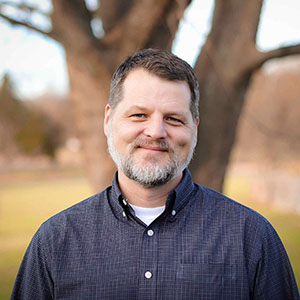Putting Faith to Work: How Faith Communities Can Support Employment for People with Disabilities
November 17, 2021

|
Vanderbilt Kennedy Center (VKC) (TN IDDRC, UCEDD, LEND) researcher and VKC UCEDD co-director Erik Carter, Ph.D., collaborated with Bill Gaventa, M.Div., for a guest blog post on the Administration for Community Living (ACL).
How do most of us get our job? It is often through personal relationships and networking that we find out about openings or others connect us to a job of interest. Or, in other words, social capital is often the pathway to work.
One source of such social capital is faith communities. There are hundreds of thousands of faith communities across the United States, by which we mean churches, synagogues, mosques, temples, and other groups that meet within a particular religious or spiritual tradition. Faith communities are also filled with employers and employees from throughout the community that surrounds the church, synagogue, temple, mosque or meeting place. They comprise people who have shared beliefs and traditions within the community. Moreover, faith communities represent the largest source of donors and volunteers in the country.
Putting Faith to Work is a practical approach for tapping the incredible social capital that exists within faith communities to help support people with disabilities in finding meaningful work. Members can come alongside interested people with disabilities; learn about their interests and talents; and then network within and beyond the congregation to help them connect to just the right job.
Putting Faith to Work is not rocket science. It simply invites a core group of dedicated people to come together around one or more persons with disabilities, to use person-centered strategies to get to know them well. It then looks to the wider congregation and its social capital to help find opportunities for job exploration, training, or employment at places where others in the congregation may already be employees or employers. Having a small group behind you and with you as you search for jobs helps increase your chances for success all the more. Do this in partnership with help from rehabilitation, transition, or supported employment services, and the changes for success increase even more.
The Putting Faith to Work model was developed and piloted by four University Centers for Excellence in Developmental Disabilities: the Vanderbilt Kennedy Center (Tennessee), the Texas Center for Disability Studies, the Institute on Community Integration (Minnesota), and Human Development Institute (Kentucky). Each worked with faith communities in their area. This work was funded by a Signature Employment grant from the Kessler Foundation. A downloadable white paper outlines the theory and rationale that drove the project. The experiences of the four sites led to a Putting Faith to Work manual that can be customized to any faith tradition or community. It can be downloaded for free in English or Spanish (or print copies can be ordered for $10) by visiting puttingfaithtowork.org. Two archived webinars outline both the theory and findings of the project:
Putting Faith to Work is not magic. It takes work in any faith community to begin a new project, organize a team, and learn as they go. But that work is also imbued with purpose and faith, a sense of acting to serve others in the spirit of that community's religious tradition, and thus a place for volunteers, leaders and people with disabilities to live out their own sense of call by enabling everyone involved to be contributors to the importance of work and its dignity.
Dr. Erik Carter is the co-director of the Vanderbilt Kennedy Center University Center for Excellence in Developmental Disabilities (VKC UCEDD).
Bill Gaventa is the retired director of Community and Congregational Supports at the Elizabeth M. Boggs Center on Developmental Disabilities and chair of the National Collaborative on Disabilities, Religion, and Spirituality.







